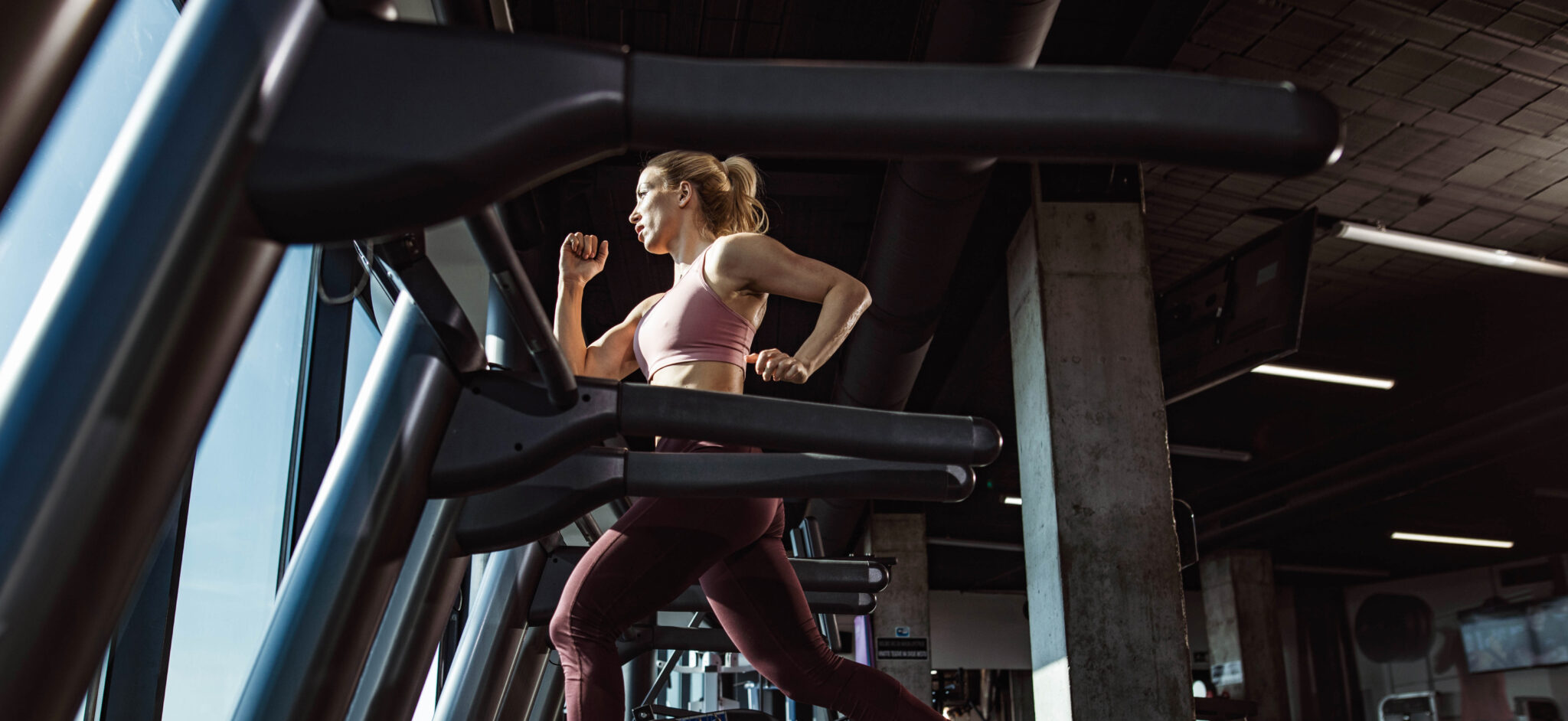Fitting out your gym with the best commercial gym equipment is key to running a competitive fitness business. Choose the right types of gym equipment, and you’ll be better able to attract and retain more members. Here’s what you need to consider.
The number of gyms, health clubs and fitness centres in the UK has increased by 5% per year on average. So, competition for members has never been fiercer. With so many other options to choose from, it’s crucial to give members what they want.
And that means kitting out your premises with the right commercial gym equipment.
You need to offer all the standard gym equipment your members expect. Plus, the pieces that will help you stand out from other clubs. And you need to find it all at the right price for your business.
We’re here to help. In this guide, we’ll run through the best commercial gym equipment, top brands, and key things to consider.
Let’s get stuck in!
Power up your business & stay in the know
Why choosing the right commercial gym equipment matters
Investing in high-quality commercial gym equipment is more than a business expense. It’s a commitment to your members.
By taking your time to choose quality equipment for your gym business, you’ll:
- Save money in the long-term and get better return on investment. Thanks to with kit that can withstand heavy use and rarely needs replacing (or repairing)
- Help members achieve their fitness goals efficiently. By providing equipment that delivers a smooth training experience
- Reduce the risk of injuries thanks to machines designed with user safety in mind
- Enhance the workout experience for members with equipment that has engaging tech built-in
- Strengthen your brand image and reputation thanks to top-of-the-line, well-maintained equipment
The right gear can help you boost member satisfaction and retention. It supports a diverse range of fitness goals. And, ultimately, sets your gym apart from the competition.
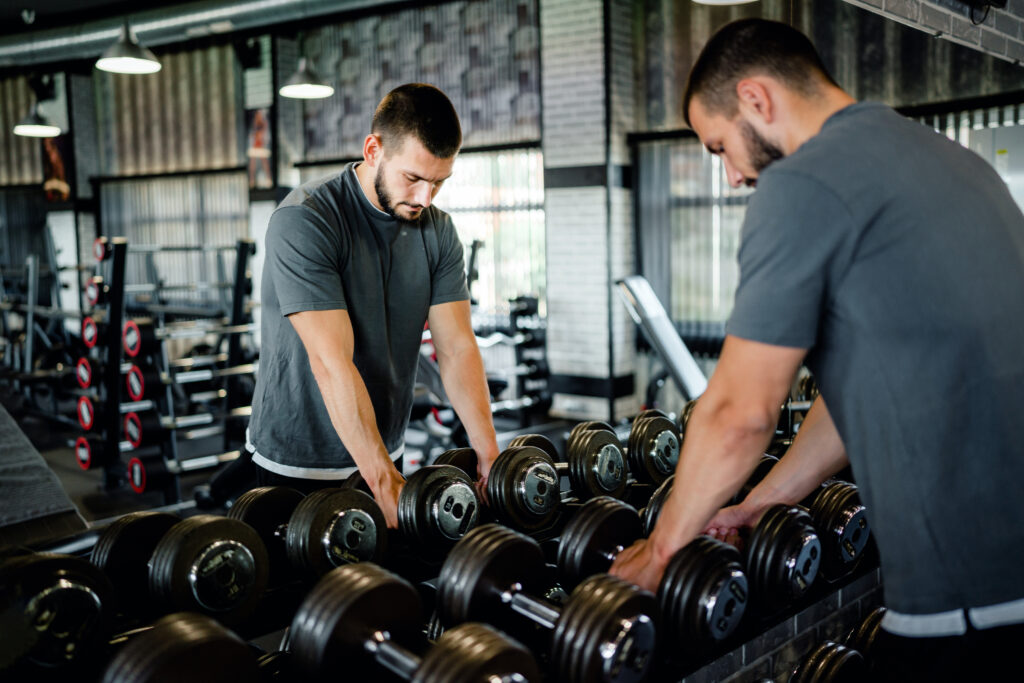
Essential commercial gym equipment list
Your members want to enjoy training at your gym. They want to follow personalised workout plans. And they want your support. That means having access to the right gym equipment.
The exact types of commercial gym equipment you’ll need will depend on:
- The type of facility you run
- The members you want to attract
Start by kitting out your club with the following categories. And you’ll be on the track to success.
Strength training equipment
Strength. Bodybuilding. Functional training. Your members will want a wide range of equipment options for strength training.
- Free weights: Dumbbells, barbells, and kettlebells offer versatility. Supporting functional and traditional strength exercises
- Weight machines: Machines like the leg press, chest press, and lat pulldown provide controlled movements. Making them ideal for beginners and experienced lifters alike
- Functional trainers: Cable machines and multi-station setups add variety and efficiency to strength training
Cardio equipment
Many gymgoers want to be faster, better conditioned, and fitter. And that means they need to keep on top of their cardio.
So, you need to provide a range of commercial cardio gym equipment to help them warm up, work out, and cool down.
- Treadmills, ellipticals, and bikes: Essential for endurance training and calorie-burning workouts
- Rowing machines and stair climbers: These provide low-impact yet high-intensity cardio options. Great for full-body engagement
Rehab & resistance equipment
Building back up to fitness after an injury. Starting a brand-new fitness journey. Looking to improve mobility and function. In all these scenarios, members will seek equipment that helps build functional muscle strength.
- Stretching aids and foam rollers: Essential for pre- and post-workout routines
- Rehab and resistance tools: Useful for recovery and low-impact training
With this list of essential commercial gym equipment, you’ll have the basics in place for your gym. And provide your members with all the key equipment they need.
As you grow, you can invest in a wider range of weight machines or specialist equipment. And look at connected gym equipment too.
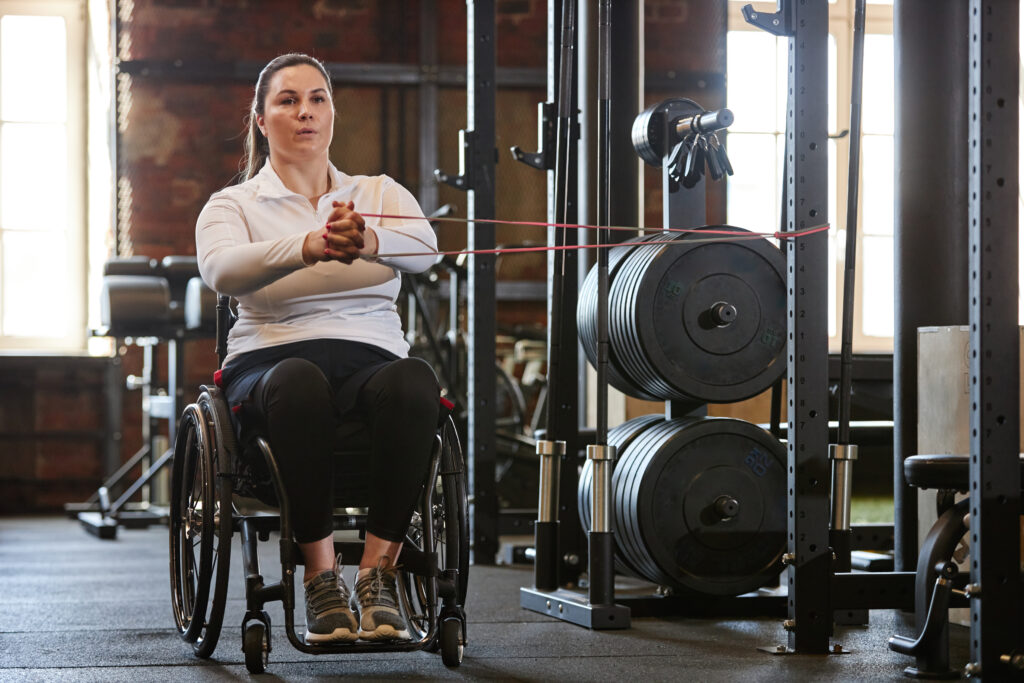
Best commercial gym equipment brands for 2025
Here are the best commercial gym equipment brands to consider for 2025.
1. Technogym
Technogym is a world leader in high-end gym equipment for gyms and fitness clubs.
The brand creates a connected, personalised, and data-powered fitness experience. So, this makes it a top choice for gyms looking to provide high-quality equipment and services.
Key offering
- Comprehensive range – Technogym offers a wide range of equipment. That includes treadmills, exercise bikes, ellipticals, rowing machines, strength training equipment, and more
- Ergonomics and design – the brand’s equipment is designed with advanced ergonomics and sleek aesthetics. This elevates both functionality and visual appeal
- Connected ecosystem – products are part of a connected ecosystem based on artificial intelligence. This powers personalised training experiences that are accessible anywhere, anytime
Reliability
Technogym equipment is known for high-quality materials and construction. This provides durability and longevity, even with heavy use in a commercial gym setting.
Top innovations
- Technogym MyRun – an all-in-one treadmill that offers personalised workouts. And integrates seamlessly with digital platforms for tracking and entertainment
- Technogym Ride – an innovative bike that provides a comprehensive workout experience. Features include online classes and entertainment options
- Strength training equipment – Technogym offers a range of strength training equipment. Products include benches, dumbbells, kettlebells, and more. And all are designed to enhance performance and safety
- Partnerships and sponsorships – Technogym has been the Official Supplier of the training centres for the Olympic Games and Paralympic Games for eight editions. This showcases their commitment to excellence and innovation
Xplor Gym + Technogym integration
FactThe integration provides a single app which can be adapted to the services your fitness facility offers. This helps you create and deliver an enhanced member experience.
Read more2. EGYM
EGYM is a leading provider of smart fitness tech. The brand offers a comprehensive ecosystem of connected gym equipment, digital solutions, and personalised training programmes.
Key offering
- Smart strength equipment – interactive machines that provide personalised and motivating strength workouts. EGYM’s Smart Strength machines offer tailored workouts for different experience levels. So, creating effective and safe training
- Smart cardio – integration with third-party cardio machines to power seamless progress tracking and personalised workout experiences
- EGYM cloud – a fully connected workout experience supporting progress tracking across the entire ecosystem
- Fitness hub – powering quick onboarding and continuous motivation for members on the gym floor
Reliability
EGYM is known for robust and reliable equipment. Pieces are designed to withstand heavy use in commercial gym settings.
Top innovations
- Personalised training programmes – AI-powered training plans that adapt to individual gym setups, equipment, and members
- Progress tracking – tools to track member progress and engagement
- Success model – a guided process to help gyms realise the benefits of EGYM’s solutions
3. Life Fitness
Life Fitness is a well-established brand. The supplier is known for high-quality commercial gym equipment.
Key offering
- Cardio equipment – Life Fitness offers a wide range of cardio machines, including treadmills, ellipticals, bikes, and rowers
- Strength training equipment – the brand provides selectorised racks, rigs, and platforms, as well as functional trainers and cable machines
- Customisation – Life Fitness equipment offers various customisation options. For example, different material finishes and smart lighting to elevate the gym environment
Reliability
Life Fitness equipment is built for heavy use in commercial settings. That gives the equipment durability and longevity. The brand has been supplying gym equipment for over 45 years.
Top innovations
- Adaptive Flex Deck® – this patented tech lets members choose from different deck firmness levels. So, providing a more comfortable and effective workout experience
- Advanced performance metrics – Life Fitness equipment includes advanced metrics to track performance and progress. This helps members achieve their fitness goals
- Interactive displays – many Life Fitness machines feature interactive displays and touch screens. So, creating an engaging workout experience
4. Precor
Precor is another leading commercial gym equipment brand. It’s a top choice for gyms. And that’s because the brand combines ergonomic design, proven science, and high-quality engineering.
Key offering
- Cardio equipment – Precor offers a wide range of cardio machines. The range includes treadmills, ellipticals, bikes, stair climbers, and cross trainers. The machines provide smooth and precise workouts
- Strength equipment – the brand provides a comprehensive selection of strength training equipment
- Connected fitness solutions – digital solutions are integrated with tracking workouts and progress. So, enhancing the overall fitness experience
- Customisation – gym equipment from Precor can be customised. Choose from different material finishes and colour options
Reliability
Precor gym equipment is built to last, with a focus on reliability and ease-of-use. The brand has been a pioneer in the professional fitness equipment industry for over three decades.
Top innovations
- Glutebuilder line – developed in partnership with Glutebuilder, this line offers precision biomechanics and exercise variety. So, catering to different fitness levels
- Functional training equipment – Precor’s functional training line includes versatile and modular designs. This supports a wide range of movement options even in a compact space
- Connected fitness – Precor offers cardio machines that feature advanced consoles and software solutions. Delivering a seamless and engaging workout experience
5. Origin Fitness
Origin Fitness is a reputable brand. They are known for providing innovative and reliable commercial gym equipment.
Key offering
- Cardio equipment – Origin Fitness offers a range of cardio machines, including treadmills, ellipticals, and bikes. These have been designed to provide effective and engaging workouts
- Strength equipment – the brand provides a variety of strength training machines. Think cable machines, weight benches, and free weights. So, catering to different fitness levels and goals
- Functional training equipment – Origin Fitness offers functional training equipment. That includes rigs, racks, and versatile training tools to support a wide range of exercises
- Gym flooring – it’s worth noting that the brand also provides gym flooring solutions. These create a safe and durable surface for workouts
Reliability
Origin Fitness equipment is built to last, with a focus on durability and performance. Gyms and fitness centres trust the brand for reliable and high-quality products.
Top innovations
- Cable machines – Origin Fitness offers a variety of cable machines, including adjustable pulleys and dual adjustable pulleys. These help members to target different muscle groups and provide versatile workout options
- Functional rigs – Their functional rigs are space-efficient and versatile. So, supporting a wide range of exercises and training routines
- Customisation – Origin Fitness offers customisation options. That includes different finishes and designs to match your gym’s aesthetic
6. Escape Fitness
Escape Fitness is a leading brand. It is known for innovative and high-quality functional fitness equipment.
Key offering
- Functional training gear – Escape Fitness offers a wide range of functional training equipment. This includes kettlebells, weighted bags, plyometric boxes, medicine balls, and more. Their equipment mimics the functional drills required by high-level sports and in everyday activities
- Durability and design – products from the brand are built to last. Combining eye-catching designs and high-end manufacturing standards
- Versatility – Escape Fitness equipment is suitable for various fitness classes and training styles. So, caters to both beginners and competitive athletes
Reliability
Escape Fitness has been supplying the fitness industry since 1998. The brand’s commitment to quality and customer satisfaction has made it a trusted name in the fitness community.
Top innovations
- Plyosoft box – this is a versatile plyometric box designed for various jumping and explosive exercises
- Multiplyo – a multi-functional piece of equipment that can be used for a range of strength and conditioning exercises
- Core momentum trainer – this is a tool designed to improve core strength and stability
- Slamball SBX – a weighted ball designed for slam ball exercises, enhancing power and coordination
Other commercial gym equipment brands to consider include:
Matrix Fitness
- Key offering – wide range of cardio and strength equipment. For example, advanced treadmills, ellipticals, and functional training tools
- Reliability – known for robust construction and reliability in commercial environments
- Innovations – focus on creating engaging workout experiences with interactive displays and personalised training programmes
Rogue Fitness
- Key offering – specialise in weightlifting equipment, including barbells, racks, and functional training gear
- Reliability – known for heavy-duty, durable equipment suitable for both professional athletes and fitness enthusiasts
- Innovations – focus on quality and durability, catering to a wide range of fitness needs
York Fitness
- Key offering – high-end fitness equipment, including treadmills and cross-trainers
- Reliability – have over 80 years of experience in providing durable and innovative fitness solutions
- Innovations – functional and durable products designed to help members achieve their fitness goals
Jordan Fitness
- Key offering – innovative commercial fitness equipment with stylish designs and excellent customer service
- Reliability – established reputation for exceptional quality and durability
- Innovations – functional and durable equipment that meets the evolving demands of the fitness industry
Before you start buying equipment…
Go deeperOpening a brand new gym? Make sure you do your due diligence on your preferred location before diving into buying equipment.
Read moreConnected gym equipment – the future of fitness
Basic gym equipment will get your fitness club off to a strong start. Want to offer your members an even better experience?
Then consider choosing connected gym equipment that integrates with your gym management software. Connected gym equipment will help make using your gym more rewarding for members.
What is connected gym equipment?
Connected gym equipment uses advanced technology to let users connect to the internet, apps, and other devices.
These connections create a motivating, personalised workout experience. And can even power real-time feedback for better results.
Examples of connected fitness equipment include:
- Treadmills, bikes and rowing machines that offer live and on-demand classes, immersive training, and performance tracking
- Strength training machines that provide guided weight training with form correction and progress tracking
- Ellipticals and cross trainers that feature virtual trails and immersive scenery
Benefits of connected gym equipment
Investing in connected gym equipment can bring many benefits for your business and your members:
- Improved engagement – interactive and immersive workouts keep members motivated and coming back
- Data-driven insights – equipment that tracks progress, helps set goals, and measures performance over time. And so, can help members achieve better results
- Customisation – connected fitness equipment can tailor workouts to individual needs and even provide coaching. So, working out is more effective and enjoyable
Connected equipment is rapidly growing in popularity. It aligns with the fitness trend for personalisation.
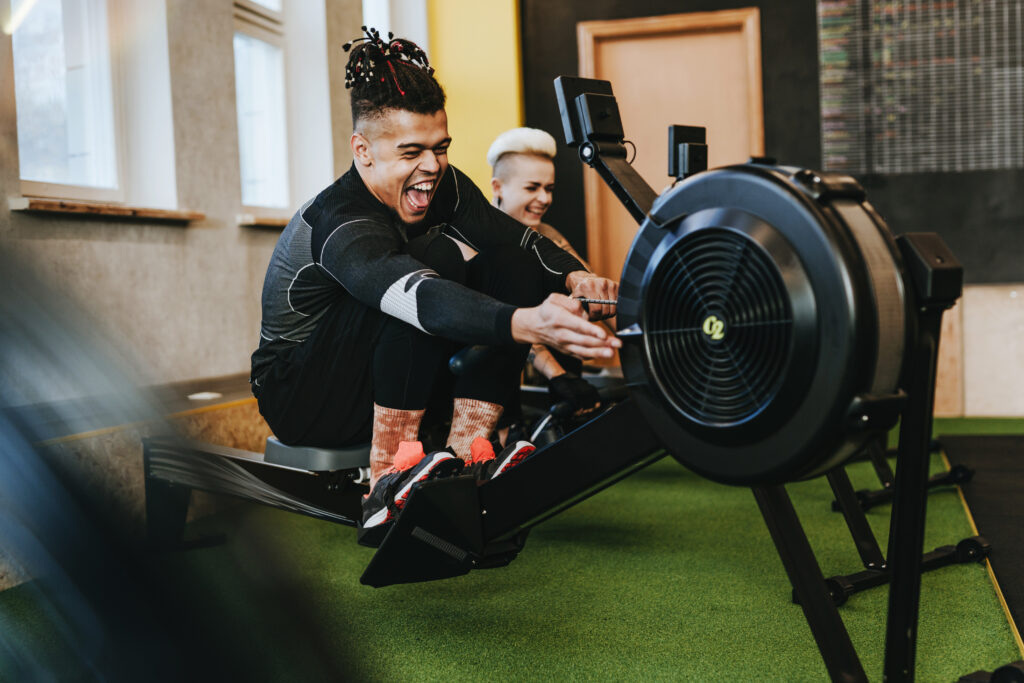
The cost of commercial gym equipment
There’s a lot to consider whether you’re looking at the cost of opening a gym, or upgrading an existing fitness facility. Equipment is an essential investment whether you buy, lease, or a mix of both.
Setting your budget
Before buying equipment, consider:
- Size and type of facility – larger gyms need more machines. Likewise, if you’re a premium fitness club, your members will expect a different spec of machine to a low cost gym
- Member demographics – match your equipment to your audience’s training preferences
- Long-term investment – prioritise quality and durability to save on maintenance/repairs
Expect to spend anywhere from £1,000–£10,000 per machine, depending on type and brand.
And always look for the most cost-efficient ways to source your new equipment from your preferred manufacturer. Instead of buying outright, you might want to consider leasing.
Counting the cost of opening a gym
Go deeperJust how much does it cost to open a gym in the UK? Get a rundown of the typical costs you’ll need to be prepared for.
Read nowBuying vs. leasing commercial gym equipment
Ultimately, whether you choose to buy or lease commercial gym equipment will depend on your:
- Financials
- Long-term plans
- And specific needs
Have the capital and plan to keep a piece of equipment for many years? Then buying may be better. Prefer lower upfront costs and want the flexibility to upgrade and change equipment? Leasing could be better.
Benefits of buying
- Ownership – once you buy the equipment, it’s yours to keep. You have no further payments, and you can use it for as long as it’s functional. You also have the option to resell it (Independent Gyms has a specific Facebook group for this)
- Cost-effective in the long-term – if you plan to keep the equipment for many years, buying can be more cost-effective than leasing
- Customisation – when you buy equipment there’s more opportunity to choose exactly what you want and customise it to fit your gym’s needs and aesthetics
But, buying can be expensive. You’ll be responsible for sorting out maintenance and repairs. And if you plan on reselling equipment, you’re unlikely to get near to the original value.
Benefits of leasing
- Lower upfront costs – leasing typically involves lower monthly payments compared to buying. So, it can be more budget-friendly for new or expanding gyms
- Flexibility – leasing makes it easier to upgrade to the latest equipment more frequently. Helping your gym stay relevant and adapt to changing workout preferences
- Maintenance and repairs – many lease agreements include maintenance and repair services, reducing your responsibility for upkeep
On the flip side, ongoing payments can stack up overtime. So, sometimes you’ll pay more in the long-run than you would have buying. Plus, customisation options may be limited.
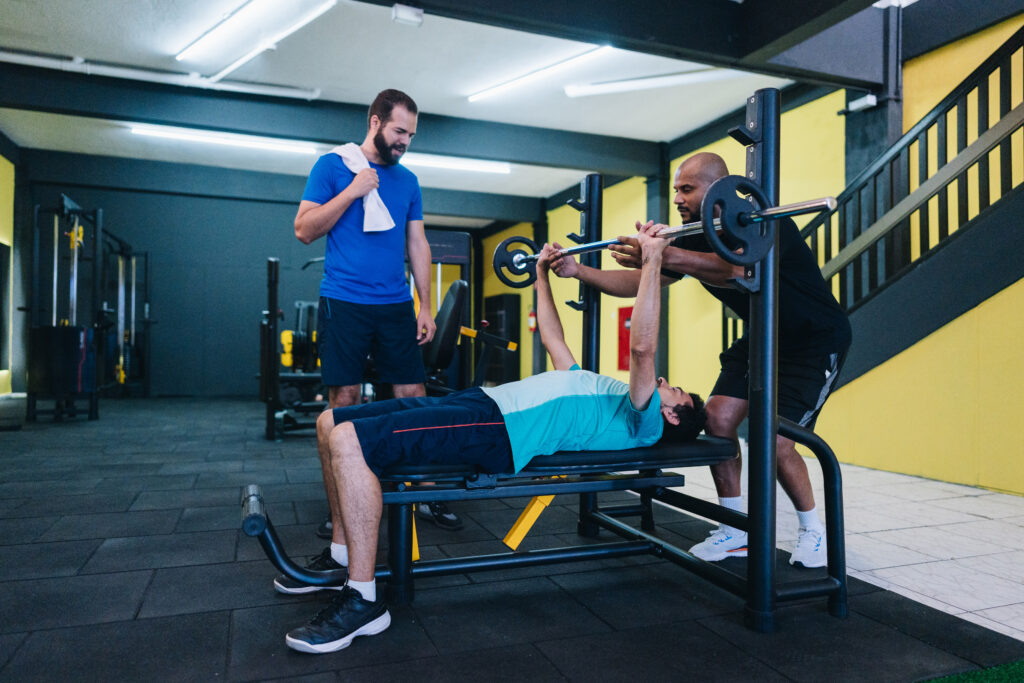
Tips for choosing the right commercial gym equipment supplier
Choosing the right commercial gym equipment supplier is crucial. It will make sure you source high-quality, reliable equipment for your gym.
Consider:
1. Quality
- Durability – look for equipment that’s built to withstand heavy use and last for years
- Performance – make sure the equipment meets your club’s needs in terms of functionality, ergonomics, and user experience. Read reviews, speak to other gym operators, and test the equipment if possible
- Certification – check that the equipment meets industry standards and certifications for safety and quality
2. Warranty
- Coverage – review the warranty terms for each piece of equipment. Look for comprehensive coverage that includes parts, labour, and wear and tear
- Duration – a longer warranty period generally indicates confidence in the product’s durability and reliability
- Customer Support – make sure the supplier offers prompt and effective customer support for warranty claims and issues
3. Customer Service
- Responsiveness – check how quickly and effectively the supplier responds to enquiries and resolves issues
- Support services – see if the supplier offers extra services. For example, installation, maintenance, and training for your staff
- Reputation – research the supplier’s reputation for customer service. Look for testimonials and reviews from other gym owners
How to research and compare commercial gym equipment suppliers
Follow these 4 steps to research and compare suppliers, keep in mind that you may choose to source equipment from more than one:
- Conduct online research: Start by taking a look at supplier websites. Read about their offerings, warranties, and customer service available. Find reviews and testimonials from other gyms and fitness clubs. And check out industry forums and social media groups to get recommendations and insights from others.
- Request quotes: Always aim to get quotes from 3+ suppliers. This will help you compare prices, products, and support available. Be clear on your requirements and budget. And remember, you can always negotiate on terms and prices.
- Visit showrooms and tradeshows: Head to showrooms and tradeshows to test the equipment you’re considering investing in. Many of the biggest and even niche equipment suppliers will be at events held annually in the UK. For example PerformX Live, Elevate, and the Independent Gyms Conference. While you’re there, speak with other gym operators to get recommendations and advice.
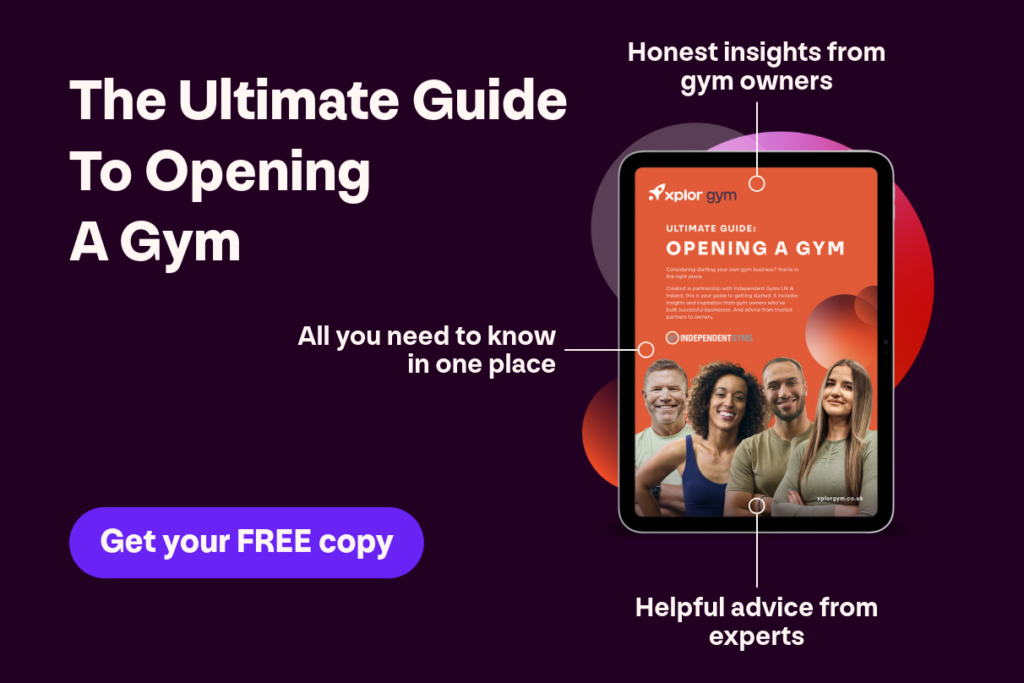
The wrap up…
The fitness industry is competitive. Members have never had as much choice as they do now. So, it’s absolutely crucial to offer them the gym equipment they want to see.
High-quality, reliable, and versatile equipment ensures safety, enhances workouts, and boosts retention. Key categories include strength training, cardio, and rehab tools.
Top brands like Technogym, EGYM, and Life Fitness offer innovative, connected solutions.
Consider buying for long-term value, or leasing for flexibility.
Assess suppliers based on quality, warranty, and service. Research online, request quotes, and test equipment at tradeshows to make informed decisions. Power up your fitness business with high-quality gym equipment that your members love.
Get the fuel to go further. See the value that Xplor Gym software that integrates with many equipment brands can bring to your fitness business.

by Xplor Gym
-
First published: 21 January 2025
Written by: Xplor Gym
